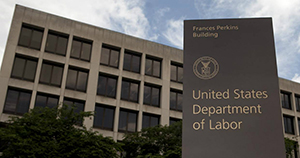By Bianca A. Meador
On December 12, 2019, the U.S. Department of Labor (DOL) announced a “Final Rule” that will allow employers to more easily offer perks and benefits to their employees. The DOL’s announcement codifies many of the changes that it proposed to the “regular rate” regulations earlier this year. The announcement marks the first significant update to the regulations governing the regular rate requirements under the Fair Labor Standards Act (Act) in over 50 years.
The Regular Rate of Pay
The “regular rate”, which may not always be the same amount as the employee’s hourly pay rate, determines how much nonexempt employees covered by the Act will receive in overtime pay (the Act generally requires that overtime pay be at least one and one-half times the regular rate for time worked in excess of 40 hours per workweek). The regular rate includes all remuneration for employment with certain exceptions. Regular rate requirements define what forms of payment employers must include and may exclude in the regular rate calculation for purposes of determining an employee’s overtime rate of pay. The regular rate generally includes all hourly wages and salaries for nonexempt workers, most nondiscretionary bonuses, shift differentials, on-call pay, and commissions. It excludes health insurance, paid leave, holiday, discretionary bonuses, and certain gifts. Even though the Act does not require employers to pay its employees on a weekly basis, calculating an employee’s regular rate and overtime pay generally must be done on an individual workweek basis.
Clarifications Made by the Final Rule
The Final Rule focuses on clarifying whether certain kinds of benefits and perks must be included in the regular rate. These changes come after, according to the DOL, many employers were reluctant to offer more modern perks like gym memberships, employee discounts on retail goods and services, and tuition reimbursement out of apprehension that the cost of administering these programs would be considered part of the regular rate calculation. Instead of risking costly lawsuits, many employers chose not to offer these competitive benefits. The DOL hopes the Final Rule will allow employers to more easily offer perks and benefits to all of their employees without the uncertainty surrounding the calculation of the regular rate for those nonexempt employees. Additionally, the Rule is intended to reduce the risk of litigation and enable employers to offer these additional perks to their employees.
These changes were necessary as compensation practices have drastically changed over the past 50 years. First, employee compensation packages now often include non-wage benefits or perks. For example, many employers offer various wellness benefits, but often are unsure as to whether these benefits should be included in calculating the regular rate. Additionally, the laws and practice concerning those more traditional work-place benefits have evolved over the decades. For example, instead of providing separate paid time off to its employees for vacation and illness, many employers now combine these and other types of leave into paid-time off plans. The Final Rule settles the dispute that these payments to employees for their unused leave time is excluded from the regular rate. In addition, numerous state and local governments have recently passed laws requiring employers to provide paid sick leave to their employees and have implemented scheduling laws which require penalty payments to employees when employers utilize certain scheduling practices. It was unclear whether these benefits affected regular rate calculations under the Act. The Final Rule updates the regulations to confirm paid sick leave and scheduling penalties need not be included in regular rate calculations.
Excluded Benefits under the Final Rule
In sum, the Final Rule confirms the following benefits can be excluded from the regular rate:
- The cost of providing certain parking benefits, wellness programs, onsite specialist treatment, gym access and fitness classes, employee discounts on retail goods and services, certain tuition benefits (whether paid to an employee, an education provider, or a student-loan program), and adoption assistance (so long as these benefits are not tied to an employee’s hours worked);
- Payments for unused paid leave, including paid sick leave or paid time-off;
- Payments of certain penalties required under state and local scheduling laws;
- Reimbursed expenses including cellphone plans, credentialing exam fees, organization membership dues, and travel, even if not incurred solely for the employers benefit; and clarifies that reimbursement that do not exceed the maximum travel reimbursement under the Federal Travel Regulation System or the optional IRS substantiation amounts for travel expenses are per se “reasonable payment”;
- Certain sign-on bonuses without claw-back provisions;
- The cost of office coffee and snacks to employees as gifts;
- Discretionary bonuses (such as “employee-of-the-month bonuses or bonuses for overcoming stressful or difficult challenges), as long as both the fact that the bonus is to be paid and the amount are determined at the sole discretion of the employer, if the bonus occurs at or near the end of the period to which the bonus corresponds, and the bonus is not paid pursuant to any prior agreement. (Neither the label nor the reason the bonus is paid conclusively determines whether a bonus is in fact discretionary. The Final Rule provides specific examples of the types of bonuses that can be excluded as discretionary, but the DOL continues to remind employers that the determination remains very fact-specific and that the standard for excluding a bonus from the regular rate remains high.); and
- Contributions to benefit plans for accident, unemployment, legal services, or other events that could cause future financial hardship or expense.
Employers may now safely provide these benefits to non-exempt employees without the concern that the regular rate should include these benefits.
Additional Changes Made to Regulations Surrounding Rate of Pay
In addition to the above, the DOL’s Final Rule makes several changes to the existing regulations. First, the Rule eliminates the restriction that “call back” pay and other payments similar to call-back pay (such as “clopening” pay, “right to rest” pay, and “predictability” pay), as mandated by several state and local laws, do not need to be “infrequent or sporadic” to be excluded from the regular rate, but reiterated that these payments must not be so regular that they are essentially prearranged. However, by contract, the DOL confirmed that “on call” pay for employees who are not called in to work, but are scheduled for an on-call shift, is part of the regular rate if the payment are “compensation for performing a duty involved in the employee’s job.”
Second, the Rule updates the regulation on “basic rate” (an alternative to the regular rate under specific circumstances). Under the current regulations, employers who make use of an authorized basic rate may exclude from the overtime compensation any additional payments that would not increase total overtime compensation by more than $0.50 a week on average for overtime workweeks in the period for which the employer makes the payment. The Final Rule updates this regulation to change the $0.50 limit to 40% of the higher of the applicable local, state or federal minimum wage.
The previous regulatory landscape left employers uncertain about the role that perks and benefits play when calculating the regular rate of pay. The Final Rule clarifies which of these perks and benefits must be included in the regular rate of pay as well as which perks and benefits an employer may provide to its employees without being required to include them in the regular rate of pay.
Final Rule Encourages Additional Benefits and Perks
The DOL expects that the implementation of the Final Rule will finally encourage employers to start providing certain benefits to their employees that they may presently refrain from providing due to apprehension about potential overtime consequences, which in turn might have a positive impact on workplace morale, employee health and wellness, employee compensation, and employee retention.
The Final Rule was published on December 16, 2019. It is contained in the Code of Federal Regulations (29 CFR § 778) and took effect January 15, 2020.

Bianca A. Meador, Attorney
Martenson Hasbrouck & Simon LLP
bmeador@martensonlaw.com
www.martensonlaw.com
